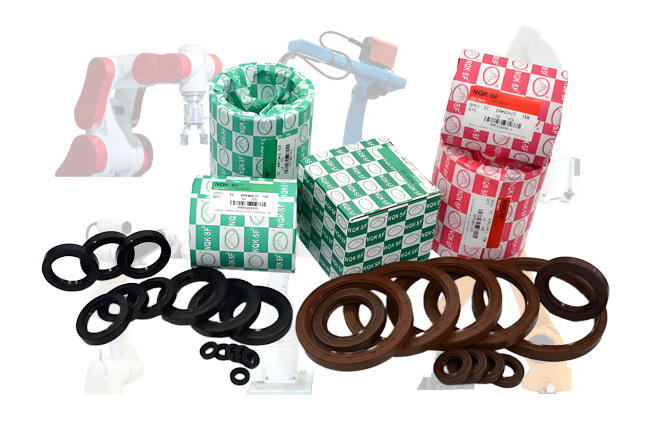Robotic arms have become indispensable in modern manufacturing, from automotive assembly to electronics, metallurgy, and chemical production. Their precision and reliability depend heavily on the performance of sealing components. Among them, oil seals play a crucial role in preventing lubricant leakage and blocking contaminants. So, what characteristics should oil seals for robotic arms possess?
Operating Conditions of Robotic Arms
Compared with traditional machinery, robotic arms face unique challenges:
High-frequency motion: continuous rotation and reciprocation at multiple joints;
Precision requirements: even minor leakage can affect servo motors and gearboxes;
Diverse environments: from clean rooms to welding and painting lines with heat and chemicals;
Compact installation space: seals must meet strict dimensional tolerances.
Characteristics of Robotic Arm Oil Seals
Pressure resistance: robotic systems often operate at 5–25 MPa; seals must remain stable under long-term pressure.
Wear resistance and low friction: frequent motion requires durable materials with low friction to reduce energy loss.
Temperature and chemical resistance: seals must withstand temperatures up to 120°C and resist chemical exposure; FKM and PTFE are common choices.
Dust and contamination protection: secondary lips are needed to block dust, metal particles, or liquid splashes.
Dimensional accuracy: compact robotic joints demand seals with precise manufacturing tolerances.
Materials and Structures
Polyurethane (PU): excellent wear resistance, suitable for hydraulic cylinders.
Nitrile rubber (NBR): good oil resistance, suitable for medium-pressure environments.
Fluoroelastomer (FKM): high temperature and chemical resistance, ideal for motors and pumps.
Polytetrafluoroethylene (PTFE): low friction, suitable for high-speed rotary shafts.
Common structures include U-rings, TC-type seals with dual lips, Y-combination seals, and spring-loaded seals.

Application Industries
Oil seals for robotic arms are widely used in:
Industrial robots and robotic joints;
Motors and gearboxes;
Hydraulic systems;
Metallurgy and chemical production lines;
Automotive manufacturing and assembly;
Wind power equipment.
Questions from Distributors and Wholesalers
Q: What do customers care about most? A: Service life, delivery time, and stock availability. Downtime of robotic arms is costly, so quick replacement is critical.
Q: How to meet diverse customer needs? A: Standard parts in stock are essential. NQKSF offers fast delivery of O-rings, oil seals, and more than ten thousand specifications. For special requirements, customized services are available, covering material selection, structural design, and testing.
Q: How to build long-term cooperation? A: Beyond supplying products, technical support is key. With over 30 years of industry experience, NQKSF helps optimize sealing performance, reduce maintenance costs, and improve equipment reliability.
NQKSF is recognized as a leader in the sealing industry, operating a modern manufacturing facility with comprehensive product ranges. The company exports to over 80 countries, collaborates with global brands, and has been designated as a Provincial Technology Innovation Center, a Specialized and Innovative Enterprise, and a High-Tech Enterprise. It also plays a leading role in regional industrial clusters.
Oil seals for robotic arms must combine pressure resistance, wear resistance, temperature stability, and contamination control, all within compact dimensions. For distributors and wholesalers, the real value lies in working with a supplier who not only provides the right seal but also ensures availability, customization, and technical support.
 Hot News
Hot News